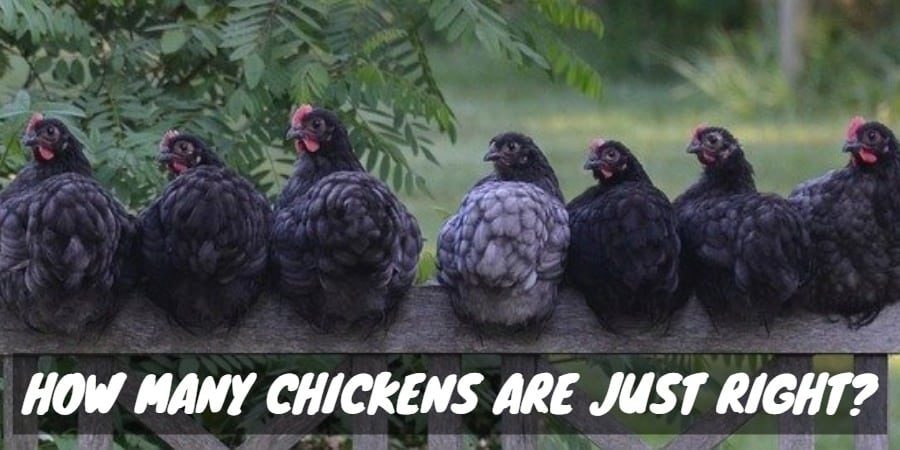The best thing about raising chickens is that chickens can eat just about anything. While there are certain foods that they have to avoid, for the most part, chickens are incredibly resilient and can adapt to a varied diet. Whether your chickens are free range or barn raised, the wide variety of foods that they can eat will make feeding, raising, and maintaining your family of feathered friends that much easier.
[amazon bestseller=”Automatic Chicken Feeder”]
What Can I Feed Chickens?

Because chickens are omnivores, they can eat pretty much anything, with only a few exceptions. In general, chickens can and will eat a fairly balanced diet of table scraps, “layer feed”, and general foraged food from around the yard. If your chickens are going to be fed, rather than free range chickens, it may be best to stick to a mixture of these three elements.
Table scraps, with the exception of the foods listed below, can be an excellent way to both augment your flock’s diet and avoid wasting food from your own table. Look for foods like leafy greens, cooked beans, corn, cereals and grains (so long as they are not too high in sugar), and berries, apples, or other fruits and vegetables. This will allow your chickens to enjoy some variation in their diet while still getting the basic supplements that they need from layer feed and foraging.
Layer feed refers to store bought chicken feed that provides a mix of nutrients and supplements that are specifically designed with egg-laying chickens in mind. Most pet stores or natural good stores should have some choices for you, as will most major retail stores and online suppliers, like Wal-Mart or Amazon. Layer feed can come either in pellets or in a loose form, so whichever one you like best, your chickens will be getting all the protein and calcium they need in any form! Once you’ve found a layer feed that you like, you can use it as a sort of base for your chicken food, while the rest of the variety in their diet comes from table scraps and foraging around the yard.
As mentioned above, chickens are omnivores, which means that they are very likely to find some things that they like to eat just lying around the yard. This could include something as innocuous as loose grains or grasses, or it could include bugs, skinks, toads, or small snakes! During warmer months, a substantial part of your chickens’ diet will most likely be made up of foraged foods, but as long as you keep their foraging area clear of dangerous foods and provide the base of layer feed, they should be perfectly safe eating whatever they can find.
If the eggs your chickens lay have shells that are too brittle or too thin, you may want to think about adding extra calcium to your chickens’ diet. Oyster grit, which is simply coarse-chopped oyster shells, can be mixed into chicken feed to give an extra boost of calcium and provide safer stronger eggs. Tiny rocks, called grit, are also an important part of a chicken’s diet, as it helps the chicken’s gizzard grind up the food they eat throughout the day. Both grit and oyster shells should be offered as a food choice for chickens on the side, and may not need to be included in their daily diet, but only as the chickens themselves seem to find necessary.
What Do Chickens Like to Eat?

While chickens will eat most about anything, you may find that your chickens have a preference for a particular food over another. This is perfectly normal, and can be a fun way to give your chickens an extra treat every now and then! A lot of chickens are particularly fond of bread and other grains, so feel free to indulge your feathered friends, but only in moderation.
Chickens are not likely to overeat any one food from a scrap heap, but the danger lies in only feeding chickens their favorite foods, and neglecting their basic needs. In the case of bread, feeding chickens too much bread will prevent them from getting the protein that they need, and can stop them from laying eggs or even just being at full health.
Water is also an important part of your chickens’ diet, so make sure they have easy access to a clean, constant source of water. For young chickens, you can mix in a little bit of sugar with the water to keep them more hydrated, but as your chickens mature, it’s probably best to stick with just simple, pure water.
What Can’t Chickens Eat?

Just because chickens will eat anything you offer them doesn’t mean that they should do so. While most foods are relatively safe, there are a few exceptions that can be extremely dangerous to a chicken’s health and can leave a chicken feeling dangerously ill or even dead.
- Beans: earlier, cooked beans were mentioned as a food that chickens can enjoy with no real danger, but raw or dried beans are a completely different story. Most beans contain a toxin called phytohaemagglutinin, which is removed when the beans are cooked, but which is absolutely lethal to chickens if consumed raw. Once eaten, phytohaemagglutinin can cause illness and death in less than an hour, so make sure to keep raw or dried beans away from your chickens at all costs.
- Mold: as you yourself would most likely not want to eat green or black mold, your chickens should not have to eat anything moldy, either. Obviously, this means making sure none of the food you give them is covered in mold or at risk of developing mold, but, perhaps less obviously, the danger of mold extends to storage of your chickens’ regular feed. Make sure you store their feed in a dry place, and avoid any damp, dark areas, where mold would be likely to grow unnoticed.
- Avocados: while avocados are currently the superfruit of the human diet, they are not nearly so super for a chicken’s diet. Not all of the avocado is dangerous for chickens, and the meat of the fruit can be a great way to provide healthy fats and proteins for your chickens’ diet. However, the skins and pits of the avocado are extremely dangerous, and should be avoided. Like raw beans, the skin and pits of an avocado contain a toxin called persin in high enough concentrations to kill a chicken within forty-eight hours. While the flesh still contains persin, the toxin is fat-soluble, and so is present in a much lower concentration, and will not hurt your chickens, as long as it is provided in moderation.
- Green Potatoes or Green Tomatoes: the debate over whether green potatoes and tomatoes are okay for humans has raged for a while, but their is no doubt over to the effect on chickens. Solanin and chaconine, two of the compounds responsible for turning potato and tomato skins green, are very dangerous for chickens. Unlike beans, cooking green potatoes and tomatoes will do nothing to neutralize the toxins, and will lead to drowsiness, paralysis, and eventual death, so make sure your chickens stay well away from green-skinned potatoes and tomatoes.
- Chocolate: most people are already aware of how dangerous chocolate can be for cats and dogs, but it is just as dangerous for chickens. Theobromine and caffeine, which are found in large doses in chocolate, as well as in many soft drinks, are toxic for chickens, and can cause any range of reactions from an irregular heartbeat to full-blown cardiac arrest. While most chickens can handle a few pecks of chocolate or a few chocolate chips, it’s probably safer to save most of your chocolate for yourself, and not risk your chickens getting too much!
Free Range Chicken Feed:

Free range chickens are certainly easier to maintain than chickens that are more domesticated, but they present a new set of issues to consider when looking after their feeding and care. Ultimately, free range chickens should be provided with the same layer feed as more sheltered chickens, and be allowed to forage for additional nutrients on their own.
Free range mostly just means that chickens have access to an open space for all or most of the day–this open space could range from an open field to an enclosed backyard, but the primary difference lies in the fact that they are allowed to freely wander for the bulk of their time.
However, free-range does not mean that your chickens do not need to be fed. Unlike more sheltered chickens, they may not need all of the various layers of diet, but free-range chickens will still need a base of layer feed to make sure that they’re getting all the nutrients that they need. Try feeding your chickens one big meal of basic layer feed or some loose table scraps once a day, and let them forage for the rest of their food throughout the day.
[amazon bestseller=”chicken feed”]
Because free-range chickens are a little bit more hands-off than barn-raised chickens, you may want to make sure that the area they have to explore is free of anything that could harm them. This could include obvious dangers, like exposure to predators, or metal or glass that they could ingest unknowingly. However, you may also want to be sure that there are no plants growing that could harm your chickens–as mentioned above, make sure there is no way your chickens could access raw beans, avocado skins, or compost heaps where any of the forbidden foods might be disposed of. For similar reasons, if you are going to supplement your free-range chickens’ diets with table scraps or grains, try to steer clear of long grains or scallion stalks, as they may impact your chickens’ digestive systems and make it difficult for them to cleanly eliminate waste.
Finally, as you would with barn raised chickens, make sure your free range chickens have access to plenty of fresh, clean water in all seasons. Especially during the colder months, it’s important to keep their water unfrozen and in a place where they can easily access it, even as they continue to wander their open range! Similarly, during the summer, you’ll want to keep their water source in a place where it gets plenty of shade, so that it won’t overheat in the hot summer sun, or allow bacteria to thrive in the warm water. Adding store-bought electrolyte supplements to your chickens’ water can also be a great way of making sure they’re properly hydrated and ready to go all day, throughout both the long heat of summer and the cold, dark, winter months.
[amazon bestseller=”Poultry Fount Complete”]
To keep water from freezing during the winter, try storing your chickens’ water in a rubber tub, preferably black or another dark color, that’s set in a place to get as much sun as possible during the day. Unlike metal water coolers, rubber insulates the water inside and keeps it from freezing solid until temperatures get too low, and the larger surface area means that water will take more time to freeze completely. Try placing ping pong balls or other small, floating devices on the surface of your water container, as the slightest breeze will be enough to disrupt the water and prevent a layer of ice from forming over the top. If you have electricity running to the area where you want to keep your chickens’ coop and water source, a single light bulb underneath or beside the water container can sometimes be enough to keep your chickens’ water supply warm enough for them to enjoy all winter long!




